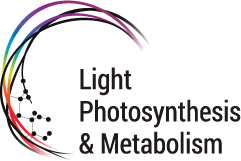
New Publication !
19th January 2021
New Member ! Dimitri Tolleter
1st March 2021
Eukaryotic phytoplankton have a small global biomass but play major roles in primary pro-duction and climate. Despite improved understanding of phytoplankton diversity and evo-lution, we largely ignore the cellular bases of their environmental plasticity. By comparative3D morphometric analysis across seven distant phytoplankton taxa, we observe constantvolume occupancy by the main organelles and preserved volumetric ratios between plastidsand mitochondria. We hypothesise that phytoplankton subcellular topology is modulated byenergy-management constraints. Consistent with this, shifting the diatomPhaeodactylumfrom low to high light enhances photosynthesis and respiration, increases cell-volumeoccupancy by mitochondria and the plastid CO2-fixing pyrenoid, and boosts plastid-mitochondria contacts. Changes in organelle architectures and interactions also accompanyNannochloropsisacclimation to different trophic lifestyles, along with respiratory and photo-synthetic responses. By revealing evolutionarily-conserved topologies of energy-managingorganelles, and their role in phytoplankton acclimation, this work deciphers phytoplankton responses at subcellular scales.
Uwizeye C., Decelle J.*, Jouneau PH., Flori S., Gallet B., Keck JB., Dal Bo D., Moriscot C., Seydoux C., Chevalier F., Schieber NL., Templin R., Allorent G., Courtois F., Curien G., Schwab Y., Schoehn G., Zeeman SC., Falconet D.*, Finazzi G*. (2021). Morphological bases of phytoplankton energy management and physiological responses unveiled by 3D subcellular imaging. Nature Communications. 12(1):1049. doi: 10.1038/s41467-021-21314.


